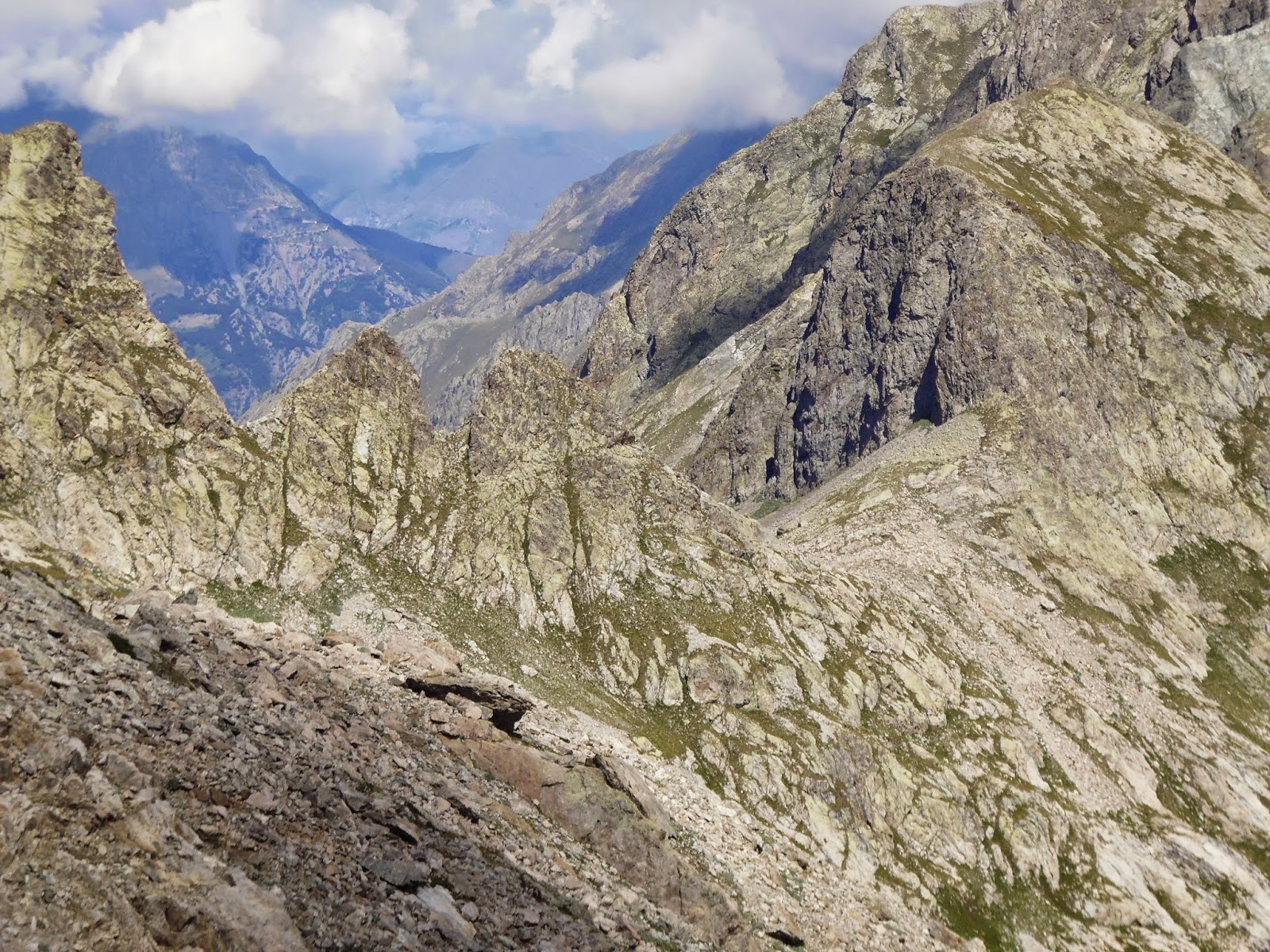 |
| Lac du Trem on route to Cime du Diable |
We had a long day ahead and planned to reach a summit today so we headed towards Pas de Trem 2480m, passing several small lakes on the way. We diverted from the GR52 at Lac du Diable and headed for the Pas de Trem so that we could go over Cime du Diable 2685m and then follow the crete South to Baisse Cavaline 2107m where we could rejoin the GR52.
 |
| Cime du Diable |
The top of Cime du Diable was well worth the extra climb and the Crete made a super route gradually dropping and becoming less rugged as we approached Baisse Cavaline. From here the path is an easy high level route to Col de Rous (1999m) then on to Baisse de St. Veran (1836m).
 |
| GR52 Between Col du Raus and Baisse de St Veran looking south |
We stopped for lunch at the hill fort on Pointe de Trois Communes (2080m).
After the fort we took the old route of the GR 52 past the abandoned military barracks on Plan Caval where we joined a Tarmac road (encountering the first car for 8 days) for 1.5km to a sharp bend at spot height 1793m, where we took a forest track south, then at spot height 1802m we took the grassy path that went up a ridge to the east of Mont Giagiabella 1911m.
 |
| Looking back along the route of the GR52. Fine ridge walking for miles! |
Then we briefly rejoined the track before taking a path forking left at spot height 1885m uphill, then down to Baisse de Ventabren 1862m. The path swapped to the east of the next top, Pointe de Ventebren on an easy path to Baisse de la Dea 1750m.
 |
| Our camping spot on Tete de Gias |
The path swapped back to the west side again on a rocky path below Cime de la Gonella. We then took the path leading directly up Mangiabo 1821m, then followed a sharp right NW back to the GR 52. The path soon turned left down across a steep slope to Tete de Gais where we pitched our tent on a rough grassy spur below Cime du Ters.
Ascent 1086m
Descent 1699m
 |
| Sunset trough the tent door |











































